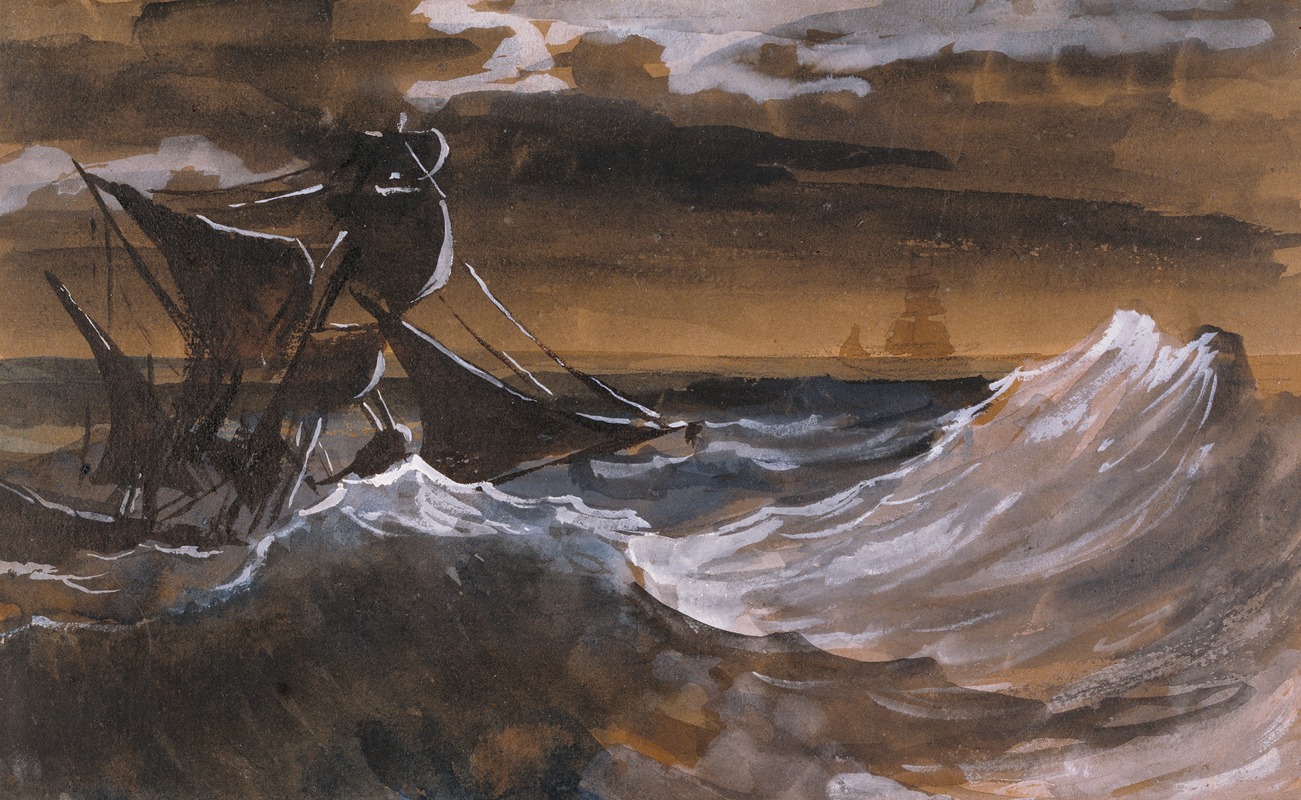
Sailboat on a Raging Sea
A hand-painted replica of Théodore Géricault’s masterpiece Sailboat on a Raging Sea, meticulously crafted by professional artists to capture the true essence of the original. Each piece is created with museum-quality canvas and rare mineral pigments, carefully painted by experienced artists with delicate brushstrokes and rich, layered colors to perfectly recreate the texture of the original artwork. Unlike machine-printed reproductions, this hand-painted version brings the painting to life, infused with the artist’s emotions and skill in every stroke. Whether for personal collection or home decoration, it instantly elevates the artistic atmosphere of any space.
Théodore Géricault, a prominent French painter and lithographer, is best known for his dramatic and emotive works that often depict scenes of intense emotion and movement. One of his lesser-known works, "Sailboat on a Raging Sea," exemplifies his fascination with the power and unpredictability of nature, as well as his skill in capturing the dynamic interplay of light and shadow.
Géricault was born in 1791 in Rouen, France, and became a pivotal figure in the Romantic movement. His most famous painting, "The Raft of the Medusa," is celebrated for its dramatic composition and emotional intensity. While "Sailboat on a Raging Sea" may not share the same level of fame, it reflects similar themes of human struggle against the formidable forces of nature.
The painting depicts a small sailboat caught in the midst of a tumultuous sea, with waves crashing around it and dark clouds looming overhead. Géricault's use of color and brushwork conveys the chaos and energy of the scene, drawing the viewer into the perilous situation faced by the sailors. The composition is dynamic, with diagonal lines created by the sails and waves adding to the sense of movement and instability.
Géricault's interest in maritime subjects was not uncommon during his time. The early 19th century saw a fascination with the sea, both as a symbol of adventure and as a representation of nature's uncontrollable power. This interest was partly fueled by the Romantic movement's emphasis on emotion and the sublime, as well as by contemporary events such as shipwrecks and naval battles that captured the public's imagination.
"Sailboat on a Raging Sea" is believed to have been painted during a period when Géricault was exploring themes of survival and human endurance. This exploration is evident in his other works as well, where he often depicted individuals in extreme situations, highlighting their vulnerability and resilience. The painting's focus on a small vessel battling the elements can be seen as a metaphor for the human condition, emphasizing the struggle for survival in an unpredictable world.
Géricault's technique in this painting demonstrates his mastery of capturing movement and emotion. His brushwork is vigorous and expressive, with bold strokes that convey the energy of the sea and the urgency of the moment. The use of contrasting colors, such as the dark, stormy blues of the water and sky against the lighter tones of the sailboat, enhances the drama of the scene.
While "Sailboat on a Raging Sea" may not be as widely recognized as some of Géricault's other works, it remains an important example of his ability to convey the power of nature and the human spirit. The painting reflects the Romantic era's fascination with the sublime and the artist's own interest in the themes of struggle and survival.
In summary, "Sailboat on a Raging Sea" by Théodore Géricault is a compelling representation of the Romantic fascination with nature's power and the human struggle against it. Through his dynamic composition and expressive technique, Géricault captures the drama and emotion of a small sailboat battling a raging sea, offering a poignant reflection on the human condition.


















